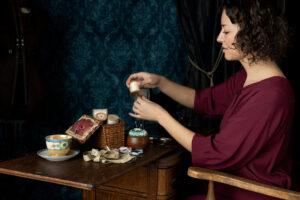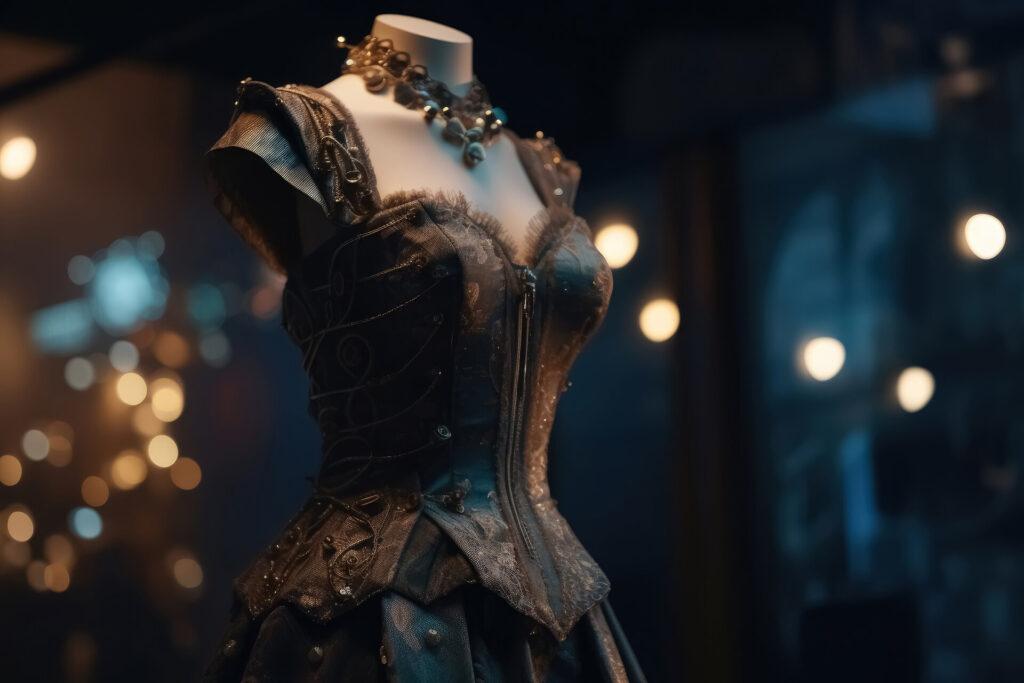Sewing a historical costume in the style of the 18th century yourself is an elaborate but beautiful undertaking. Attention: Enough time should be planned, because these costumes are quite elaborate and consist of several parts. But for those who always wanted to feel like Claire Fraser at a ball, the effort is worth it.
What are the parts of an 18th century costume for women?
A dress of the 18th century consisted of several parts, all of which were usually not easy to tailor and were worn on top of each other.
Bodice
 The bodice sat tightly over the laced bust and was sometimes reinforced with rods. Patterns for this can be purchased from Simplicity, for example, but it must be said that they are not historically accurate, but adapted to today’s cutting habits. However, for starters, they are well suited. A special feature of the dresses of the 18th century: the top did not have a curved seam for the breast, also called “French seam”. Instead, the bust was lifted up by the laced bust underneath and the seams were straight.
The bodice sat tightly over the laced bust and was sometimes reinforced with rods. Patterns for this can be purchased from Simplicity, for example, but it must be said that they are not historically accurate, but adapted to today’s cutting habits. However, for starters, they are well suited. A special feature of the dresses of the 18th century: the top did not have a curved seam for the breast, also called “French seam”. Instead, the bust was lifted up by the laced bust underneath and the seams were straight.
Plug
The plug (or “stomacher”) was tucked behind the lacing. It was a stiff, roughly triangular shaped part that was a single piece and was often intricately embroidered. For this, crystal beads wholesale are suitable to give the plug the necessary finesse.
The skirt
Sewing a skirt is easy? Not these skirts – unfortunately. The drape has it in itself, in patterns this is often simplified, in the original the folds were sophisticated and usually each individual fold once again provided with subfolds. In this way, the typical silhouette of the 18th century woman is created even without the substructure of the laced bust and hip padding, because the pleats were intended to emphasize the hips and buttocks and thus make the waist appear particularly slim.
The laced bust
The laced bust is the forerunner of the corset, but it has nothing in common with its uncomfortable and constricting successor. The laced bust was more of a support for the chest, not a means of making the waist appear narrower than it actually was.
The hip pad
Under the skirt belonged a hip pad that made the skirt appear even more voluminous. This emphasized the silhouette of the woman. The hip pad is the forerunner of the hoop skirt, which sometimes took on absurd proportions, especially in the rococo period.
Source:
Michael – stock.adobe.com
Kathy – stock.adobe.com
